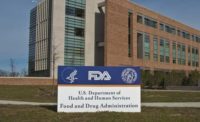For the last 10 years, I have been working closely with federal and state government officials on the prevention of intentional contamination of food, or what is known in our government as food defense.
While intentional criminal food contamination incidents have been around for decades, they are isolated and the consequences have been minor. The work I am involved with focuses more on the potential for terrorist contamination of the food supply. This became a government concern shortly after Sept. 11, 2001 and resulted in the government facilitating the creation of the Food and Agriculture Sector under the authority of Homeland Security Presidential Directive 7, an entity that I have co-chaired since 2005.
In 2004, the government issued Homeland Security Presidential Directive 9 (HSPD 9). That directive states: “The United States agriculture and food systems are vulnerable to disease, pest, or poisonous agents that occur naturally, are unintentionally introduced, or are intentionally delivered by acts of terrorism. America’s agriculture and food system is an extensive, open, interconnected, diverse, and complex structure providing potential targets for terrorist attacks. We should provide the best protection possible against a successful attack on the United States agriculture and food system, which could have catastrophic health and economic effects.”
Directive 9 calls for many things, but in particular it directed the federal government agencies to work with the private sector as well as state, local and tribal agencies to identify vulnerabilities in the agriculture-to-food system and to develop mitigation strategies to address those vulnerabilities. Congress also picked up on this concept when it created the Food Safety Modernization Act (FSMA) that addresses food defense in several sections.
Much to the government’s credit, and in particular the Food and Drug Administration (FDA) and the United States Department of Agriculture (USDA), the mission to protect the U.S. agriculture and food systems was taken seriously. An enormous number of initiatives has been undertaken to accomplish this goal. One of my favorites is the Strategic Partnership Program on Agroterrorism (SPPA) which conducted approximately 40 vulnerability assessments between 2005 and 2008.
Each SPPA assessment lasted approximately three days and consisted of a team of 20 to 30 participants from federal, state and local agricultural, food, public health and law enforcement agencies; food and agricultural companies; and their trade associations. I had the pleasure of participating in four or five and can tell you they were intense — and at times troubling — with consequences that have the potential to be quite bad.
But these were very beneficial in that it allowed government and industry to come together and fully understand the realities of what can and cannot happen. Everyone walked away with significant knowledge and insight. On a few occasions I have reviewed vulnerability assessments that were done by government agencies or their contractors without private sector involvement, and I can assure you that the ones conducted with the private sector involvement are vastly superior.
A great deal of the information that was gleaned from the vulnerability assessments is accessible on FDA’s website — look for the mitigation strategies database. Mitigation strategies are cataloged by node, so for example, if you wanted to know what mitigation strategies could be used to improve security around a blend tank or pasteurizer, you can easily look that up in the database.
Fast forward to the Food Safety Modernization Act which mandates that regulated facilities create and keep written food defense plans at their facilities. The database is designed to help industry meet that burden — easily.
As the Act was being drafted and even after it was signed into law, I had grave concerns about the magnitude of the burden that the Sections 103 and 106 provisions created for dairy processors. As drafted, I viewed it as a mandate that had no boundaries; the planner would need to explore every imaginable threat and create a strategy to mitigate each and every threat. As someone who has worked in this area for a decade or so, I can tell you the possibilities are as infinite as the collective human imagination.
A close look at the Act explains why I had concern. FSMA requires facilities to conduct a hazard analysis for both unintentional contaminants (traditional food safety) and intentional contamination (e.g. terrorist). But, FSMA limits the food safety analysis to reasonably foreseeable hazards, but does not provide any limitation whatsoever with respect to intentional contamination. FDA understands the issue and will, in my opinion, set reasonable boundaries when it issues a separate rule for food defense.
FDA has taken a wise and rationale approach to food defense, first by creating tools like the mitigation database as well as a number of others with even more on the way. Check out their website at www.fda.gov/Food/FoodDefense/ToolsResources. And second, by deciding to issue an advanced notice of proposed rulemaking that will solicit stakeholder input on how to craft a food defense regulation to meet its Congressional obligation without destroying the food industry. In addition, FDA plans to continue to work with industry and conduct more vulnerability assessments albeit in a streamlined fashion. And, I stand by FDA 100% on this.
It’s funny, at a time when the world is looking at just how dysfunctional Washington, D.C., is, I have a different view. I am especially proud of FDA and USDA as well as the other federal, state and local agencies for doing what Congress does not seem to be able to do. These folks are working together, working with industry and stakeholders and most importantly are achieving world class results.




